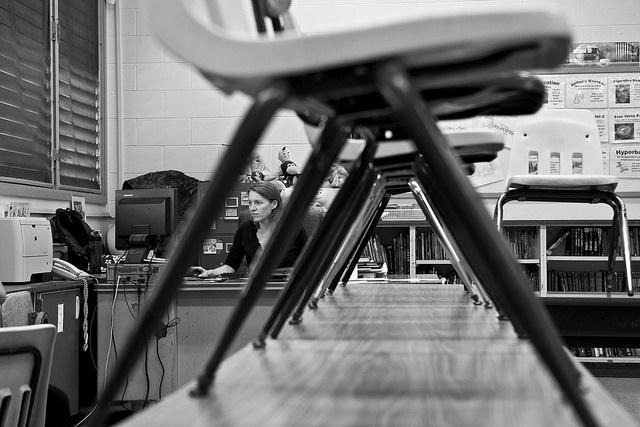Putting teachers to the test
Opinin piece suggests that teachers should be evaluated by students
“Getting good grades doesn’t mean you’re smart.” This famous quote reflects the inconsistency of how schools keep track of student’s academic abilities. Whether or not one is able to earn a passing score does not always determine if they will be categorized as smart. Some students put in astounding amounts of effort to earn the prestigious A, while their peers do not, but they both receive the same grade. Teachers may also be at fault in this dilemma, since their grading systems are completely varied. To better understand why students should be able to grade their teachers, it is necessary to review why the grading systems are unfair, how it would help others choose classes, and how students would become happier overall.
Grading systems are based on accuracy, completion, participation, and curves, all of which depend on the situation. A student could rigorously study for days and fail a test, while a peer who never even glanced at class material scored an A by guessing. If a certain test does not go over well with the entire class, a teacher can just “throw it out” and move on, never returning to the misunderstood material. Another problem with grading is the inaccuracy of handwriting. A student may have the answers correct, but their grade may depend on how readable their penmanship is. When a B looks like a D it is marked incorrect. When a math equation’s solution is not noticeably underlined, bolded, and circled, it is marked unfinished. Some students may not be able to learn under a certain teacher’s style, and fail their classes because of it.
If students were able to mark up an instructor for bad behavior, participation, or presentation, it could help later students join a class that is right for them. Colleges use this method to be engaging and so should all schools. High school students spend 180 days, or 1,000 hours, in the classroom per year. While stuck in a boring or uncomfortable environment, learning will be the least of their focuses. If this teacher-grading system existed in high schools, the “hands on” learners could be grouped with a spontaneously involved teacher while the “listeners” are bunched with a classic lecturer. This would create even more academic freedom, and kids may be able to retain new information better.
There is no doubt that students would benefit from being able to choose the type of classroom setting they want to spend four years in. A more favored effect of having student selected teachers would be a decrease in student complaining. Copious amounts of students spend most of their time in the school building complaining about teachers rather than studying. If they weren’t paired with the incompatible instructor in the first place, the hallways might portray a happier atmosphere. Being able to pick and choose teachers would also force students to see how their choices reflect their lives, a skill the school has recently been trying to instruct. If the students pick a favorable teacher, they will have a successful grade, and vice versa.
Since “getting good grades doesn’t mean you’re smart”, is almost entirely true for high school students, it should also be true for faculty members. This teacher-grading system will show following students whether or not they will be interested in a teacher’s style. Different kinds of instructors can be matched up with corresponding students, making the time spent in class more beneficial. Colleges use this system to help create perfect classrooms, so high schools should too. Maybe then, the famous quote will transform into “getting good grades actually means you’re smart.”

Aleena is the Assistant Video Editor and is a senior at CFHS. She enjoys shredding on her snowboard, scoring sweet goals in soccer, and breathing.

